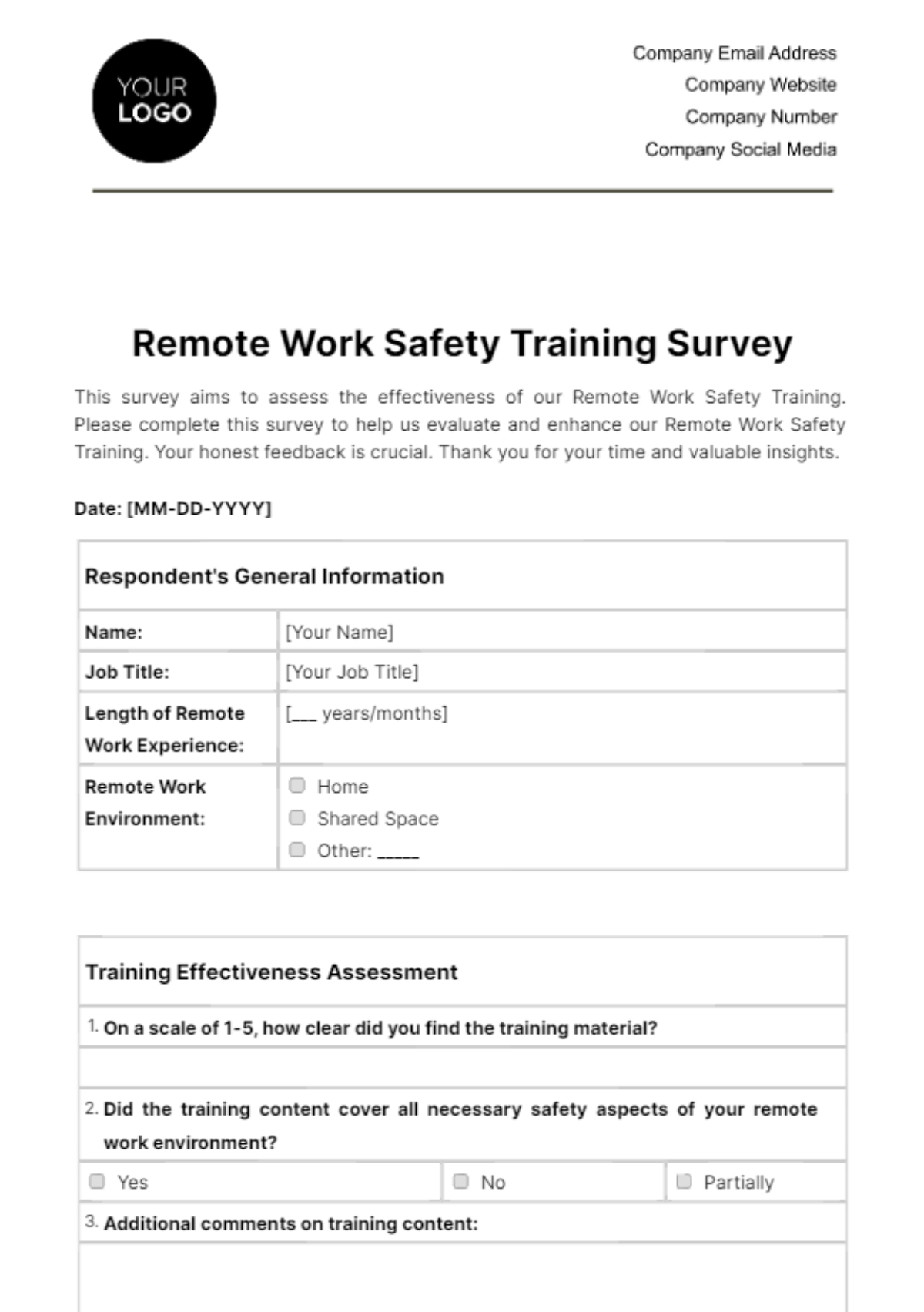Using a working from home survey template has several benefits. It can help employers:

- Identify areas where employees may need additional support.
- Make improvements to the remote work policy.
- Demonstrate to employees that their feedback is valued.
There are many different working from home survey templates available online. Employers can choose a template that best fits their needs and the specific information they want to collect.
Key Components of a Working from Home Survey Template
A working from home survey template typically includes the following key components:
1: Employee Information
This section collects basic information about the employee, such as their name, job title, and department.
2: Work Environment
This section asks questions about the employee’s work environment, such as whether they have a dedicated workspace, what type of equipment they use, and whether they have any ergonomic concerns.
3: Productivity
This section asks questions about the employee’s productivity, such as whether they are able to get their work done on time and whether they feel like they are being productive.
4: Satisfaction
This section asks questions about the employee’s satisfaction with working from home, such as whether they enjoy working from home and whether they would like to continue working from home in the future.
5: Challenges
This section asks questions about any challenges that the employee has faced while working from home, such as technical difficulties or difficulty separating work from personal life.
Summary
A well-designed working from home survey template will include all of these key components. By collecting this information, employers can gain a better understanding of how their employees are adjusting to working from home and identify areas where they can make improvements.
How to Create a Working from Home Survey Template
A working from home survey template is a valuable tool for employers who want to gather feedback from their remote employees. By using a template, employers can ensure that they are collecting the most important information in a consistent and efficient manner.
1: Define the Purpose of the Survey
Before you create a survey, it is important to define the purpose of the survey. What information do you need to collect? What are you hoping to learn from the survey results?
2: Identify the Target Audience
Who are you surveying? All remote employees? Employees in a specific department? Once you know who you are surveying, you can tailor the survey questions to the specific needs of the target audience.
3: Choose the Right Questions
The questions you ask in your survey will determine the quality of the data you collect. Make sure to ask clear and concise questions that are relevant to the purpose of the survey.
4: Design the Survey
The design of your survey can impact the response rate. Use a simple and easy-to-follow design. Avoid using jargon or technical terms that your target audience may not understand.
5: Pilot the Survey
Before you launch the survey to all of your employees, pilot the survey with a small group of employees. This will help you to identify any errors or confusing questions.
6: Launch the Survey
Once you are satisfied with the survey, launch the survey to all of your employees. Be sure to provide clear instructions on how to complete the survey.
7: Analyze the Results
Once you have collected the survey results, it is important to analyze the results carefully. Look for trends and patterns in the data. Identify areas where you can make improvements to your remote work policy.
Summary
By following these steps, you can create a working from home survey template that will help you to collect valuable feedback from your remote employees. This feedback can be used to improve your remote work policy and create a more productive and satisfying work environment for your employees.
In conclusion, a working from home survey template is a valuable tool for employers who want to gather feedback from their remote employees. By using a template, employers can ensure that they are collecting the most important information in a consistent and efficient manner. The information collected from a working from home survey can be used to improve the remote work policy and create a more productive and satisfying work environment for employees.
As the remote work trend continues to grow, it is important for employers to have the tools and resources they need to support their remote employees. A working from home survey template is one of the most important tools that employers can use to collect feedback and make improvements to their remote work policy.
